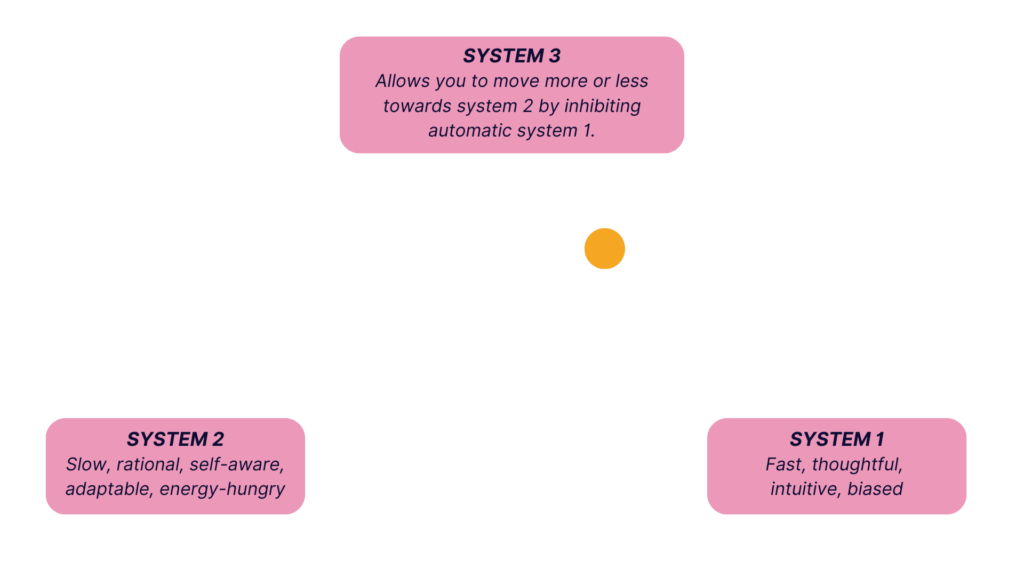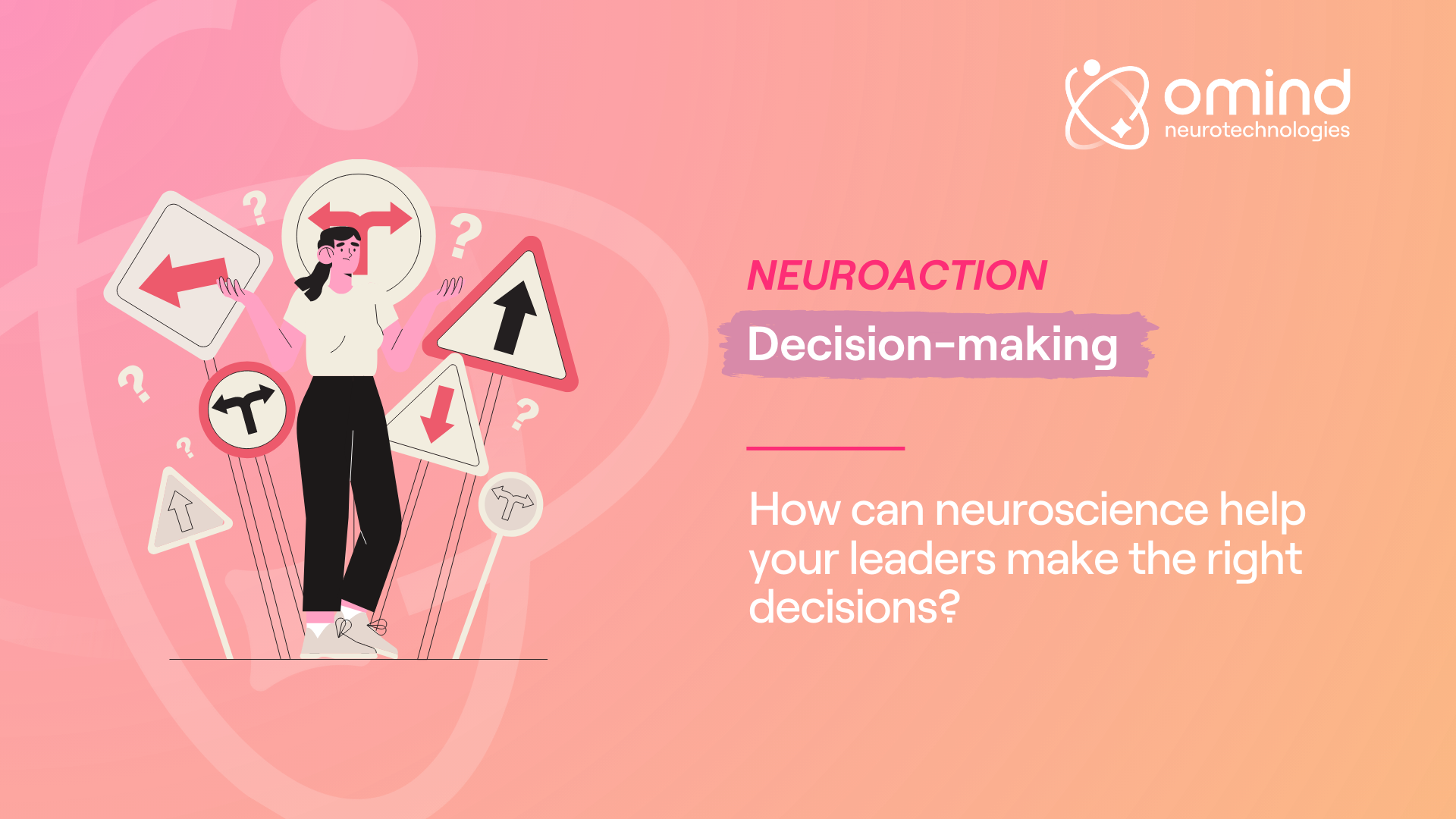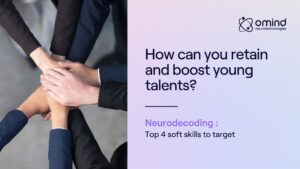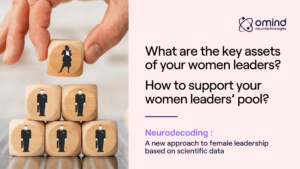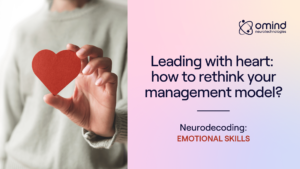HOW NEUROSCIENCE CAN HELP YOUR LEADERS MAKE THE RIGHT DECISIONS?
1) No, decision-making isn't "rational"!
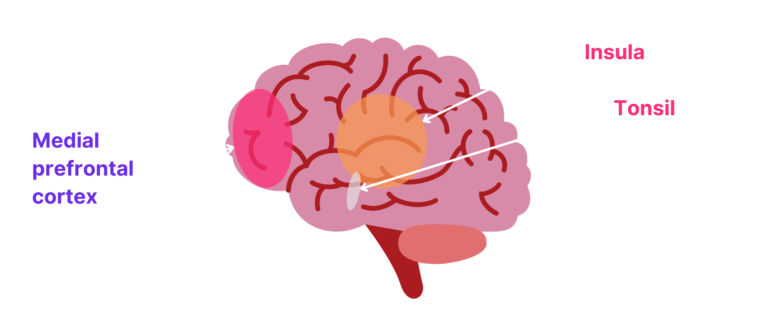
- SYSTEM 1 is fast, automatic and relies on biases or “mental shortcuts” to make decisions ;
- SYSTEM 2, on the other hand, is slower, more deliberate and more analytical.
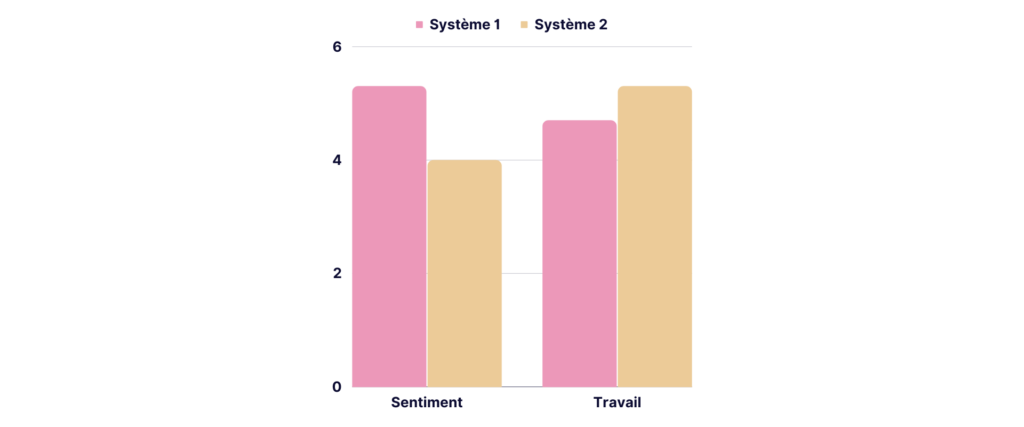
Proportion of system 1 and system 2 involvement in sentimental and professional life choices. System 1 is significantly more involved in the sentimental domain (M = 5.3) than in the professional domain (M = 4.7), while System 2 is significantly more involved in the professional domain (M = 5.3) than in the sentimental domain (M = 4).
2) Making the "right" decision: a matter of balance
-
- NEITHER TOO LITTLE EMOTION : This means that if there are lesions in brain regions involved in emotional processing, researchers have shown that we can’t properly assess gains and risks – even if cognitive abilities are intact.
- NOR TOO MUCH EMOTION : When we’re overwhelmed by emotion, our automatic mode and biases take over our capacity to reason. Daniel Kahneman has highlighted the cognitive bias of loss aversion: humans tend to consider a loss more important than a gain, on the order of 2.5 x more. In the context of economic decision-making, this translates into less risk-taking for fear of losing our investment. This discovery earned Kahneman the Nobel Prize in Economics in 2002.
3) We have the power! Taking a step back and becoming self-aware
NeuroTip #2 : Decide as a team, and adopt the right method!
Team decision-making helps to develop perspective and reduce biases. At least if certain conditions are respected.
Researchers have tested various hypotheses about what makes team decisions effective⁷, and demonstrate that the best decisions are made if we MAXIMIZE SHARING within the group: sharing expertise, positive as well as negative feedback, or even responsibilities.
Need to decide on an investment, a major team change, or the launch of a new product line? Follow the 5 golden rules of shared team decision-making:
EXPERTISE
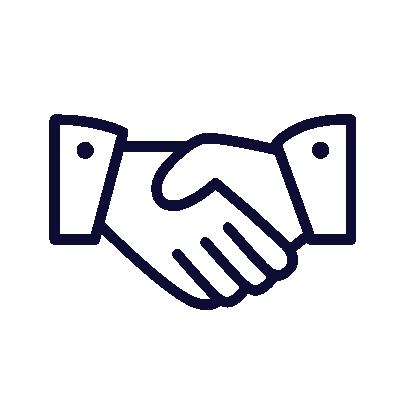
CHALLENGE
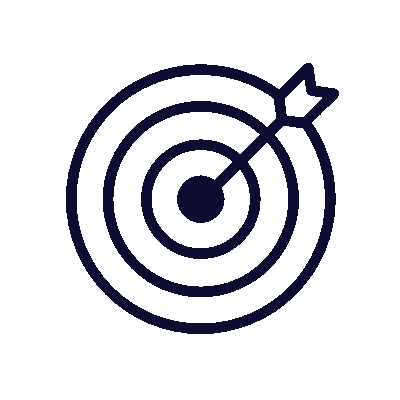
Explicitly allow everyone to question expert assumptions and biases, reducing the risk of error.
BALANCE
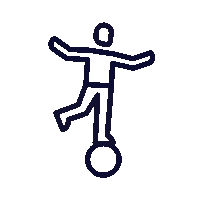
Share responsibilities and workloads to reduce pressure on individual decision-makers.
POSITIVITY
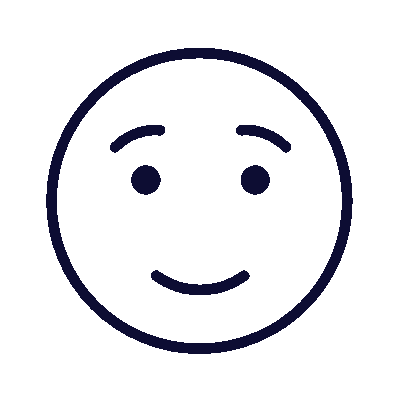
Engage everyone in providing emotional support and positive feedback, improving group morale and motivation and reducing the risk of groupthink.
FEEDBACK

Quickly review the decision-making process to improve the team’s overall performance.
NeuroTip #3 : Embrace your talents through games and neuroscience
Experience and train your self-awareness, emotions and cognition with our Omind Neurotechnologies programs.
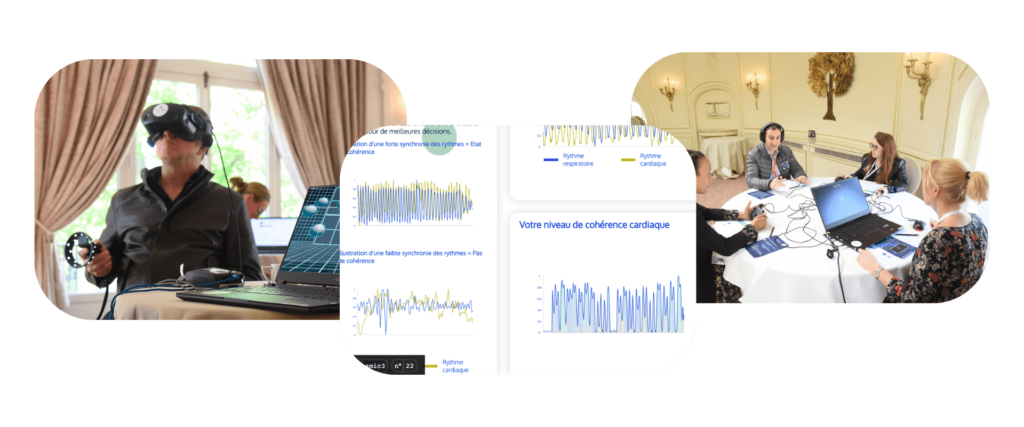
BONUS : "ETHICAL" AND "WISE" DECISION-MAKING
A good example comes from neurobiologist Francisco Varela⁸ who, in his book Quel savoir pour quelle éthique ? explains that the right level for making “wise” decisions would be at a balance point between RATIONAL AND REFLECTED APPROACH (system 2) and AUTOMATIC, INTUITIVE AND BIAIZED DECISION MAKING (system 1).
This balance point would be shifted slightly towards system 1, which would allow decisions to be made quickly without too much energy, but would not be too biased.
Varela gives the example of a chess player who plays without being “conscious” of all the mechanisms involved in identifying the best move to make. But after playing, he is able to explain rationally why he made that particular move.
